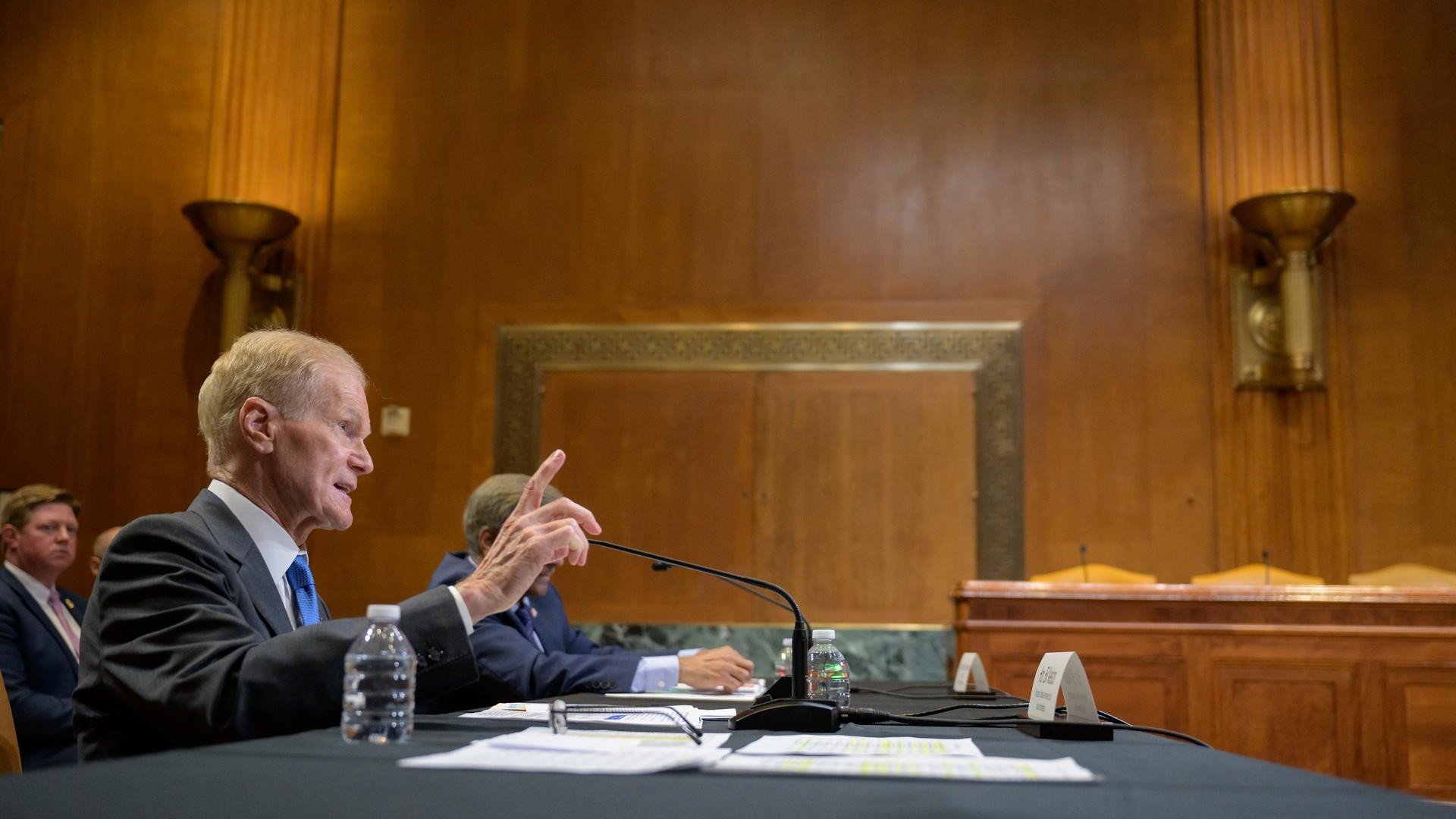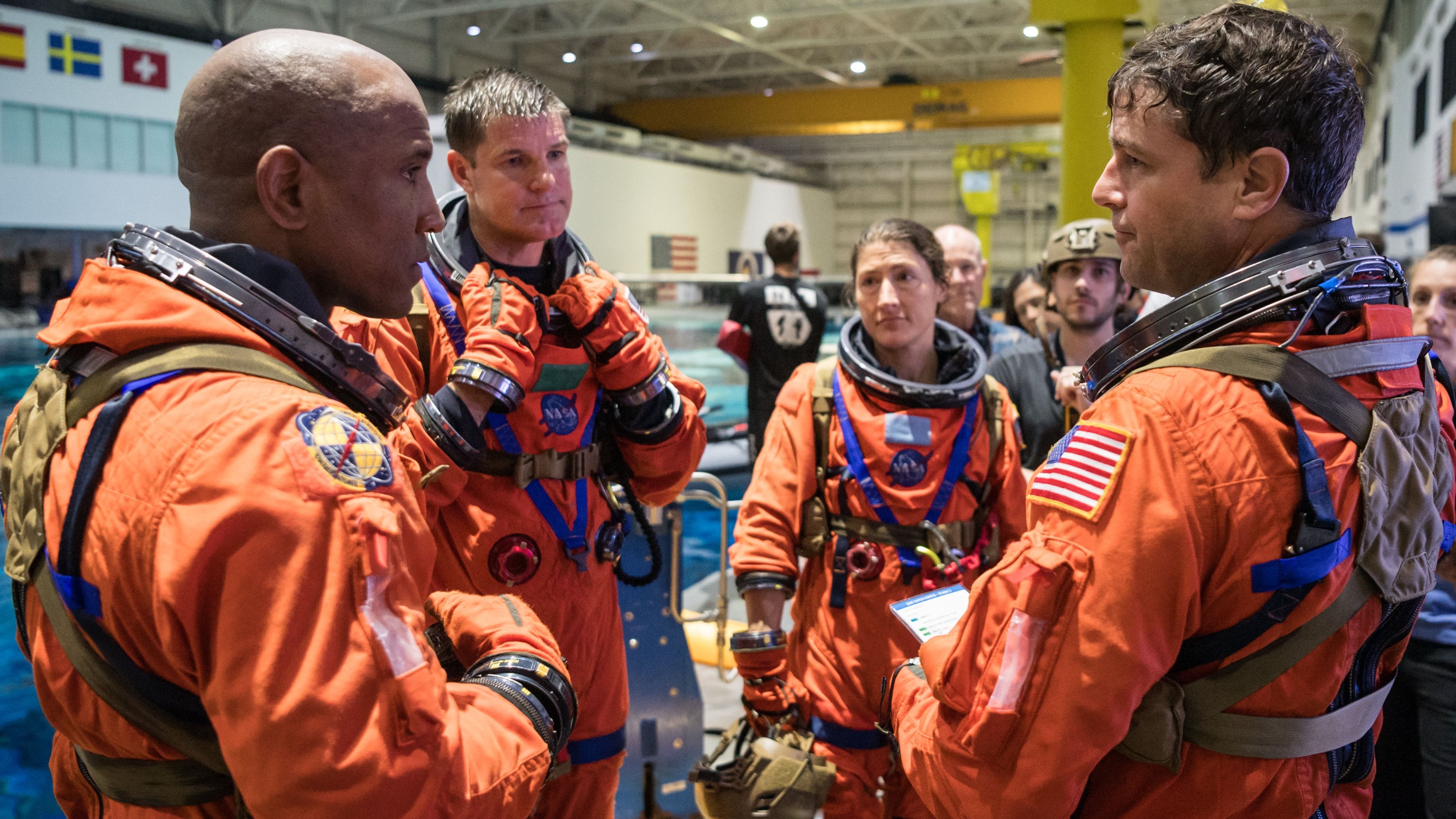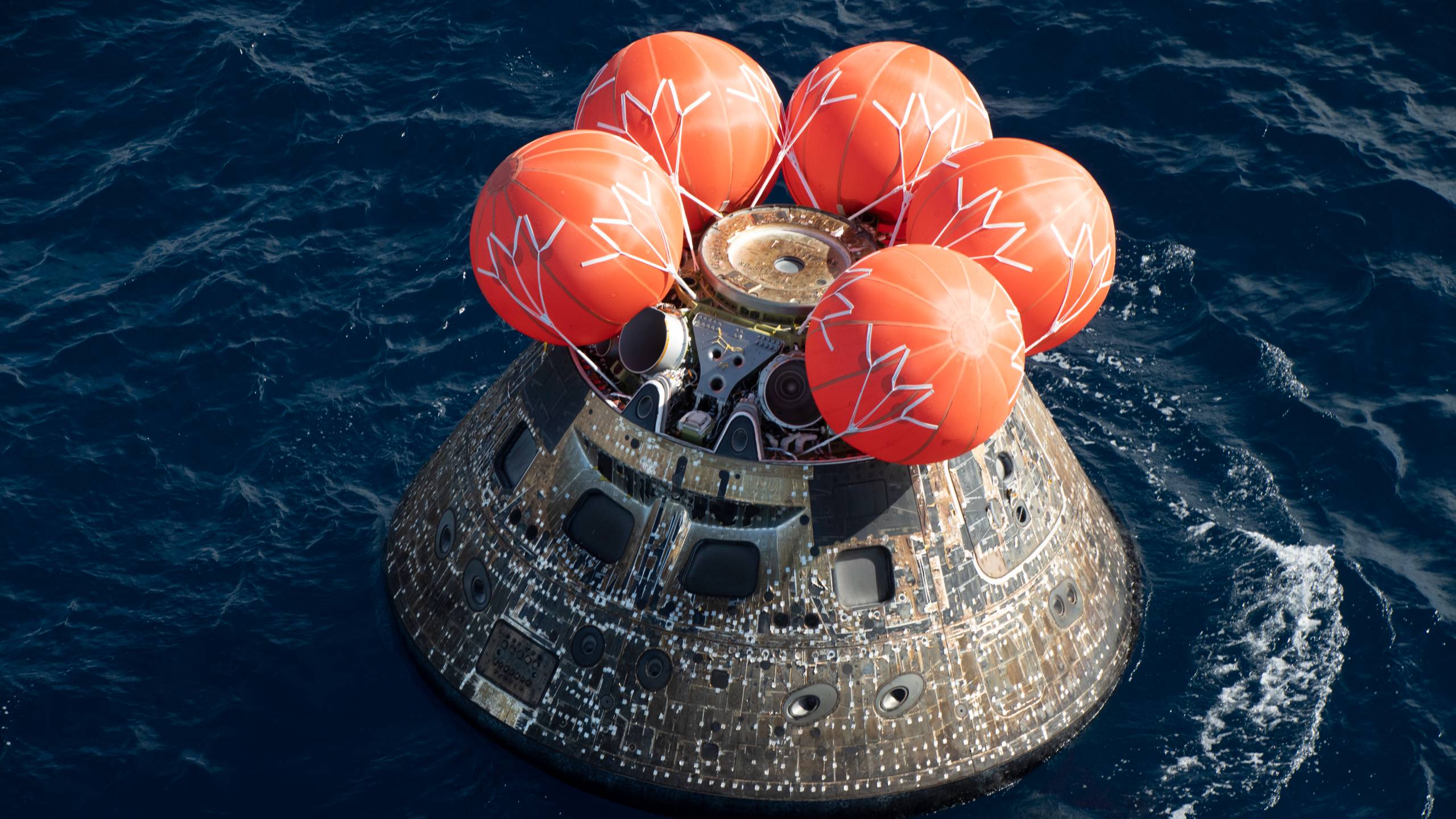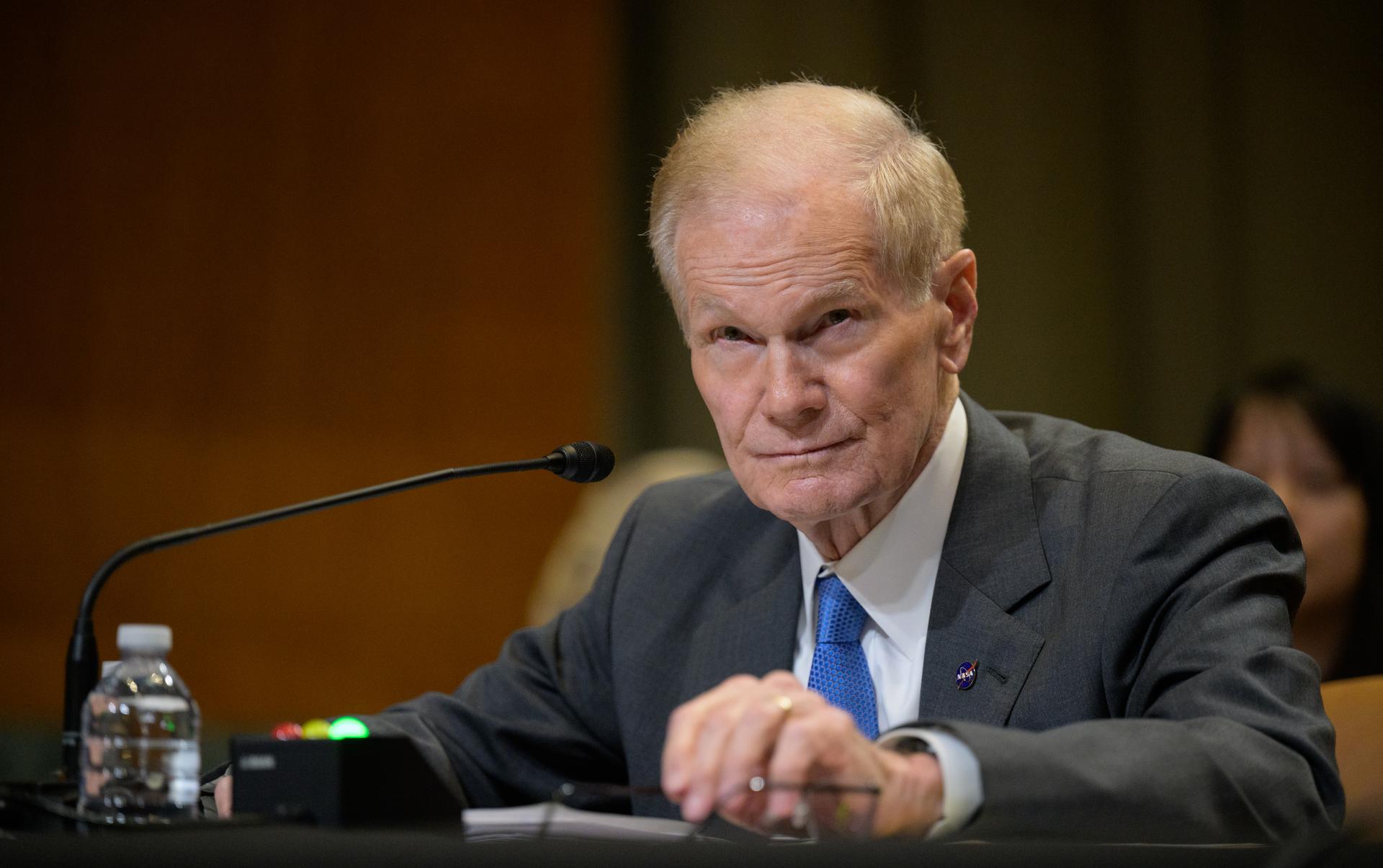Safety comes 1st for Artemis moon missions despite 'space race' with China, NASA chief says
Artemis 2 is so far expected to fly in 2025, with astronaut safety a priority before the schedule.

A U.S. Senate committee heard from the head of NASA what the nature of a developmental mission means: sometimes, you need to wait.
NASA administrator Bill Nelson, while mindful of what he calls a "space race" with China to establish a sustained presence on the moon, said Thursday (May 23) he will only commit to the current Artemis 2 liftoff date of September 2025 if astronaut safety is not compromised.
"The fact is that when you go to the moon in order to go to Mars, it's hard," Nelson said in livestreamed comments. He also paraphrased remarks by then-U.S. President John F. Kennedy in a famous 1962 speech about the Apollo program: "He said we'd go to the moon not because it's easy, but because it's hard."
The round-the-moon Artemis 2 mission, alongside moon-landing effort Artemis 3, was delayed in January this year in part due to long-known unexpected eroding of the Orion spacecraft's heat shield during re-entry in Earth's atmosphere during the Artemis 1 uncrewed test mission of December 2021. Artemis 2's schedule slid by nine months, while Artemis 3 delayed at least a year to 2026.
Nelson was speaking before a Senate appropriations committee that has oversight of NASA, as part of the 2025 budget negotiations which will be ongoing for months. But Nelson's testimony came weeks after NASA's Office of the Inspector General (OIG) issued a report saying the ablation problems create "significant risks" to Artemis 2 safety.
To be sure, the heat shield isn't the only reason behind Artemis program delays; commercial spacesuits as well as the SpaceX Starship lander, needed for Artemis 3, are also facing development challenges. Starship has yet to complete a full uncrewed orbital test mission including a safe re-entry, for example, although SpaceX may try again as early as next month. (NASA has said repeatedly it wants multiple successful Starship flights and specific objectives met before authorizing astronauts to fly on board.)
Get the Space.com Newsletter
Breaking space news, the latest updates on rocket launches, skywatching events and more!
Earlier this month, three of the Artemis 2 crew spoke with Space.com about the OIG report, emphasizing that the issue has been known for a long time, that fixes are ongoing, and that there is no rush in anyone's mind to get off the ground.

Commander and NASA astronaut Reid Wiseman, a former U.S. Navy test pilot who is used to complex aerospace development programs, told Space.com earlier this month that a safe flight is the goal, not keeping to an artificial schedule. (Crewmates Victor Glover of NASA and Jeremy Hansen of the Canadian Space Agency, both military pilots as well, said much the same thing; remaining crew member and NASA astronaut Christina Koch was not available for interviews due to training).
"When you build a new vehicle, it doesn't matter how many requirements you set and how many qualification programs you set," Wiseman added. "When human hands are trying to put together an incredibly complex and powerful machine, it is going to manifest in some issues. And there are going to be things you learn as you go all the way up to launch."
Related: 'That's part of space exploration': Artemis 2 astronauts unfazed by moon mission delays (exclusive)

Nelson's comments to the committee about the Artemis 2 timeline also emphasized caution, saying NASA "will not launch until it's ready." While he said September 2025 is a pretty good date, something unexpected could arise or be affected by funding — which he says is forecast at half a billion dollars less in NASA's exploration division.
In the meantime, however, "Artemis 2 is meeting all the milestones. We are doing extra examination of some of the unusual things that happen on the heat shield." And when Nelson was asked about independent investigation, he said the OIG and the Government Accountability Office have both done so already: "We are constantly having other stuff come in," he said of this external feedback.

Geopolitical tensions, Nelson acknowledged, are one of the reasons NASA is trying to get to the moon safely, but quickly: China is said to be planning an astronaut landing at the suspected water-rich south pole of the moon by 2030, according to Reuters.
NASA, meanwhile, is targeting uncrewed landings there as soon as this year under its Commercial Lunar Payload Services program, which tasks companies to send NASA science payloads to the moon.
"We have a probe on a commercial lander going later this year that is going to dig and see at the south pole if there's water," Nelson said, referring to the Astrobotic Technology Griffin Mission 1 carrying NASA's Volatiles Investigating Polar Exploration Rover or VIPER mission.
"If there is [water], then there is rocket fuel, hydrogen and oxygen — and that becomes a very one valuable resource. That's why China is going to the south pole as well."
China is a recurring theme at Congressional meetings involving NASA; the agency cannot engage in bilateral agreements or coordination with the country under a 2011 directive known as the Wolf amendment, unless Congress gives permission.
Earlier this year, for example, several members of the U.S. House subcommittee on space and aeronautics said China's Tiangong space station would have an advantage for lucrative low-Earth orbit research if a gap happens between the expected end of the International Space Station in 2030 and the rise of private space stations in the next decade.
Join our Space Forums to keep talking space on the latest missions, night sky and more! And if you have a news tip, correction or comment, let us know at: community@space.com.

Elizabeth Howell (she/her), Ph.D., was a staff writer in the spaceflight channel between 2022 and 2024 specializing in Canadian space news. She was contributing writer for Space.com for 10 years from 2012 to 2024. Elizabeth's reporting includes multiple exclusives with the White House, leading world coverage about a lost-and-found space tomato on the International Space Station, witnessing five human spaceflight launches on two continents, flying parabolic, working inside a spacesuit, and participating in a simulated Mars mission. Her latest book, "Why Am I Taller?" (ECW Press, 2022) is co-written with astronaut Dave Williams.









